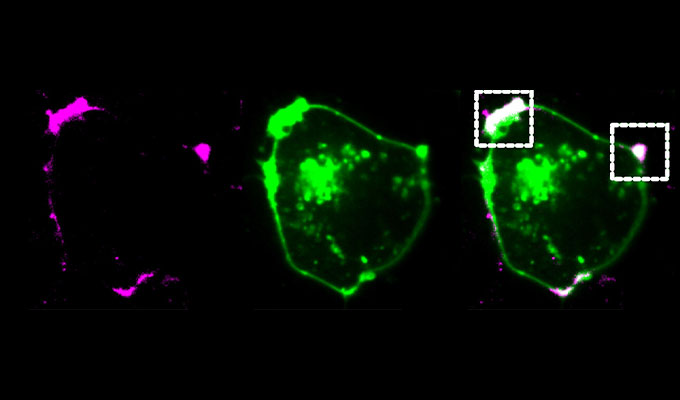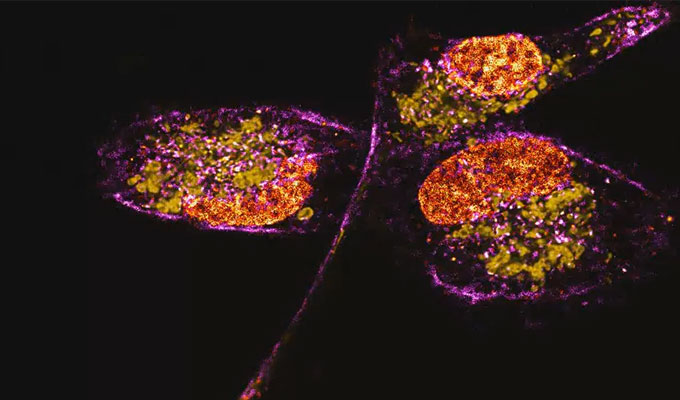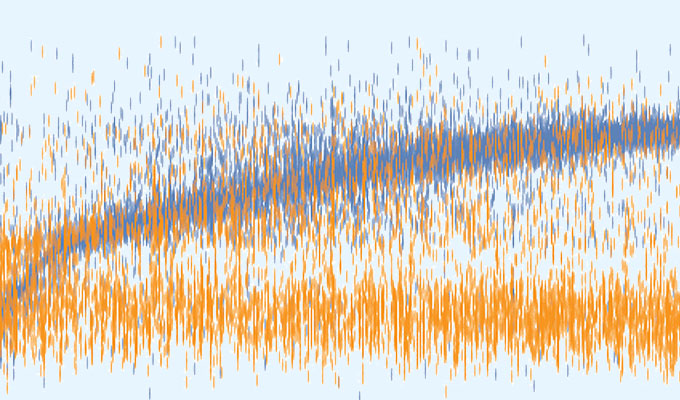Calibration of fluorescent measurements in microbial cells towards a more standardised synthetic biology
Speaker: Sonja Billerbeck Moderator: Antoine de Morrée
Online live: Apr 12, 2023 12:00 PM EST Posted: Apr 24, 2023 Views: 2559
Abstract
Fluorescent measurements are key to measure part and circuit performance in synthetic biology. Currently, fluorescent measurements are often reported in arbitrary units making it impossible to cross-compare or re-use data across laboratories.
We have developed a simple and robust protocol to calibrate fluorescent units and cell counts using inexpensive chemical calibrant dyes for blue, green and red fluorescent as well as microspheres for cell count measurements.
We evaluated the calibration efficacy of these dyes via an interlaboratory study. In this webinar I will walk through the challenge of un-calibrated units for synthetic biology, the calibration protocol, and our approach to testing efficacy of this protocol via a large inter-laboratory study involving undergraduate students.
The speakers will discuss:
a) Fluorescent measurements are key to measure part and circuit performance in synthetic biology.
b) Reporting of fluorescent data in arbitrary units makes cross-comparison and re-use of data impossible.
c) We developed a three-colour calibration protocol using inexpensive chemical dyes and tested it via a large inter-laboratory study partly involving undergraduate students.
Speaker

Sonja Billerbeck, Ph.D.
Assistant Professor, University of Groningen
Sonja is a synthetic biologist leading her own research team as an assistant professor at the University of Groningen, NL. She holds a PhD from ETH...
View more
Moderator

Antoine de Morrée, Ph.D.
Tenure-track Assistant Professor, University of Aarhus
Antoine de Morrée, PhD is a tenure-track Assistant Professor at the department of Biomedicine, Aarhus University, where his View more
Keywords
Fluorescent unit calibration, Reproducibility and reusability of data in synthetic biology, Inter laboratory studies
References
Jacob Beal, Cheryl A Telmer, Alejandro Vignoni, Yadira Boada, Geoff S Baldwin, Liam Hallett, Taeyang Lee, Vinoo Selvarajah, Sonja Billerbeck, Bradley Brown, Guo-nan Cai, Liang Cai, Edward Eisenstein, Daisuke Kiga, David Ross, Nina Alperovich, Noah Sprent, Jaclyn Thompson, Eric M Young, Drew Endy, Traci Haddock-Angelli, Multicolor plate reader fluorescence calibration, Synthetic Biology, Volume 7, Issue 1, 2022, ysac010, https://doi.org/10.1093/synbio/ysac010
Csibra, E., Stan, GB. Absolute protein quantification using fluorescence measurements with FPCountR. Nat Commun 13, 6600 (2022). https://doi.org/10.1038/s41467-022-34232-6
Beal, J., Farny, N.G., Haddock-Angelli, T. et al. Robust estimation of bacterial cell count from optical density. Commun Biol 3, 512 (2020). https://doi.org/10.1038/s42003-020-01127-5
Beal J, Haddock-Angelli T, Baldwin G, Gershater M, Dwijayanti A, et al. (2018) Quantification of bacterial fluorescence using independent calibrants. PLOS ONE 13(6): e0199432. https://doi.org/10.1371/journal.pone.0199432
How to participate in the iGEM competittion/How to start an iGEM team:
Do you have a question about this webinar?
Post your question, and we'll invite the webinar speaker to respond. You're welcome to join the discussion by answering or commenting on questions ( Note: Not all questions, especially those not directly relevant to the webinar topic, may be answered by the speaker. ).
Tips for asking effective questions
+ Description
Write a detailed description. Include all information that will help others answer your question.
22 Q&A




